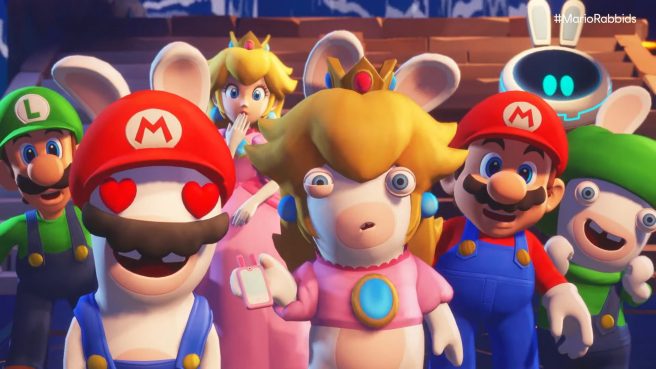Mario + Rabbids Sparks of Hope tech analysis, including frame rate and resolution
Mario + Rabbids Sparks of Hope is almost here, and Digital Foundry is back with a new technical analysis covering topics such as frame rate and resolution. One of the big takeaways is that the team opted for a different visual approach compared to the first game, Mario + Rabbids Kingdom Battle.
Here are some of the more notable points:
– Sparks of Hope has a more angular look compared to the first game
– Most of the environmental assets have been rendered with fewer polygons this time around
– Soft, smoothly lit look of Kingdom Battle is rendered a bit harsher in Sparks of Hope
– Texture art can also look different
– Sparks of Hope has broad brush stroke style patterns drawn into certain environmental textures which now appear flat and lack the incidental geometric and normal maps in the first game
– High polygon geometric foliage from the original swapped out for the typical alpha test foliage textures
– Foliage altered or stripped back
– Ex: Shader effect for high density grass is absent this time
– Sparks of Hope looks more flat, cartoony, and sharp
– However, visual style works well on its own terms
– Contrast between sharp looking environments and geometrically dense characters/enemies lets most shots easy to read visually
– Mario + Rabbids Sparks of Hope has a resolution of 1600×900 when docked
– 1066×600 resolution in portable mode
– Post-process anti-aliasing
– Edge aliasing is still a bit of an issue
– Mario + Rabbids Sparks of Hope frame rate targets 30 FPS
– Manages to hit this most of the time
– Some scenarios when frame rate can suffer such as with cutscenes
– Some of the larger combat arenas can suffer from longer frame rate problems
Check out the full technical analysis for Mario + Rabbids Sparks of Hope below for more on the game’s frame rate, resolution, and more.
Mario + Rabbids Sparks of Hope is due out for Switch on October 20, 2022.
